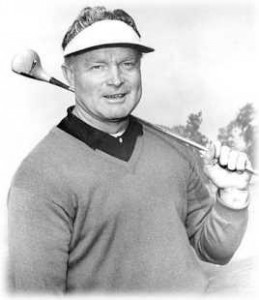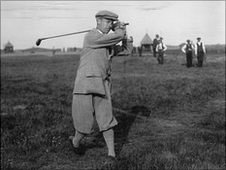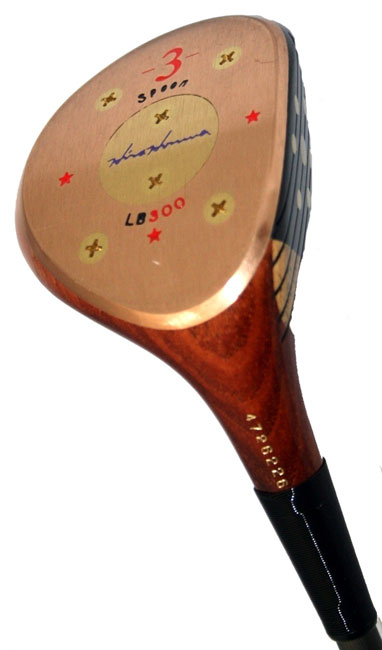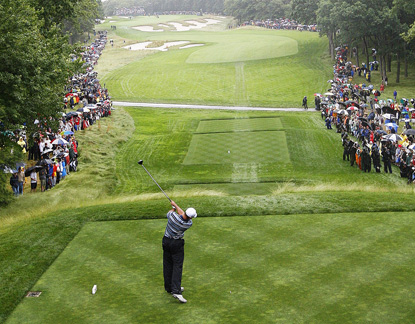 The record for the longest golf drive has stood unbeaten for 35 years and was achieved with a wooden club, so have three decades of improving golfing technology failed to make an impression?
The record for the longest golf drive has stood unbeaten for 35 years and was achieved with a wooden club, so have three decades of improving golfing technology failed to make an impression?
On 25 September 1974, a 64-year-old man called Mike Austin is recorded to have driven a golf ball 515 yards from the tee on a Las Vegas golf course.
It was a 450 yard par 4 so he will have ended up more than 50 yards past the green. No-one on record has hit a ball further in a tournament.
The record was established a year before Tiger Woods was even born, and prior to the last three decades of equipment innovation.
Incredibly this man – alleged to have hit a ball over 200 yards with a can of cola strapped to a club face and who never won a professional title – still holds the claim for the longest drive.
It stands somewhere between folklore and reality. The Guinness Book of World Records does not recognise a figure for overall drive, quoting instead distance travelled by the ball in the air.
That record stands at 408 yards (373m) by Karl Woodward in 1999.
Austin’s feat was witnessed by former PGA champion Chandler Harper, course officials and the rest of his four-ball grouping. But how has it not been surpassed?
Technology in golf was meant to have changed the game forever. And anyway, golf – at least professionally – is seen as a young man’s game.
“Nobody’s ever done anything like it,” Austin told Travel and Leisure magazine shortly before his death in 2005.
“If regulations allowed us to do whatever we wanted I don’t think it would affect the game to the detriment of the average player
Doug Wright, Wilson Golf
“People think they hit a ball 300 yards and it’s a goddamned miracle. But I know I did something all the greats couldn’t do. That’s something to really think about.”
He drove the ball with a tailwind of up to 35mph (55kmph) and was at an altitude of well above 2,000m above sea level but the thing is that Austin was using a Persimmon driver – the ones actually made from wood.
Golf is meant to have moved on since then. Clubs are lighter, more forgiving to mis-hits and are more powerful. They have gone from being made of wood then steel to titanium and this has greatly affected how far the ball is being driven.
Tradition and skill
Top players’ average driving distances on the PGA Tour jumped up by over 20 yards in the 10 years between 1990 and 2000 and nearly another 20 between 2000 and 2003. At that point there were nine players averaging drives of over 300 yards.
Dan Simmons takes a sideways glance at golfing GPS tech
At that time, when titanium technology was first being utilised, drivers twice the current limit – 460 cubic centimetres (28 cubic inches) in size – were being created and driving averages were at an all-time high.
And that is when golf’s governing bodies stepped in to keep what they saw as tradition and a high level of skill in the game.
The efficiency of club faces was capped at 83% and further – even more technical – regulations were placed on the balls. At the start of the 2010 season, even the amount of grooves on a club face was limited.
With these regulations, Bubba Watson , the biggest driver on the PGA Tour for three of the last four years, has actually seen his average drive distance drop.
At the end of the 2009 season, it stood at 312 yards per drive. While not exactly a chip shot, it represents a fall of seven yards in three years.
In fact, the PGA Tour average currently stands at 287 yards – a figure quite easily out of the reach of most amateurs, but one that has remained the same since 2003.
400-yard drives
“Maybe we made drivers too big, too quickly,” says Doug Wright, business director for Wilson Golf in Europe.
“If you look at other industries, they tend to limit their technologies, but we pretty much went up to the limit straight away.”
 In the 2009 season, 47 drives of 400 yards or more were recorded on the PGA Tour . The longest was 467 yards by Charley Hoffman, and while huge, it was still 50 yards short of what Mike Austin achieved with inferior technology and an age disadvantage.
In the 2009 season, 47 drives of 400 yards or more were recorded on the PGA Tour . The longest was 467 yards by Charley Hoffman, and while huge, it was still 50 yards short of what Mike Austin achieved with inferior technology and an age disadvantage.
J L C Jenkins competing in the Amateur Golf Championship at Sandwich in 1914
Both golf clubs and golf fashions have come a long way in the last 100 years
“If you were a strong player you could still get some decent distance [with an old-style driver],” says Wright.
“For the normal player you would struggle to get consistency from the tee because the sweet spot was so small and, secondly, the club was quite heavy.”
So are the rules getting in the way of new tech coming out to help golfers?
“I’m always guarded about people who want to stifle innovation,” says Steve Burnett, coaching department manager at the English Golf Union.
“The normal golfer on the street wants to hit the ball further, he wants the latest gadgets because golf’s a hard game to play. It requires a lot of time and a lot of practice so the easier we can make it the better, for the health of the game as a whole.”
Redundant courses
And he is not the only one who thinks that technology is of great use to the more casual player:
“If regulations allowed us to do whatever we wanted to the golf ball and the club, then I don’t think it would affect the game to the detriment of the average player,” says Wright.
“I think the professional game – which a lot of the concern is around – and the risk of courses becoming redundant, is a different argument all together. I can see both sides.”
There is increasing debate about whether there should be two sets of rules, one set for amateurs and one for professionals. The argument is that purity should be kept for elite players but amateurs should be offered all the help they can get.
English Open Golf Champion John H Taylor
Older courses are being extended because of drive length increases
It is a similar idea to Formula 1 in which drivers are forced to prove their skill by driving without navigation and  braking devices available to regular drivers .
braking devices available to regular drivers .
Despite the advances in technology, there is one fact you cannot escape – the faster you swing the club, all things being equal, the further the ball will go. Austin is rumoured to have a swing that approached 150mph. A number of top pros are now swinging the club at upwards of 120mph.
But the simple answer could be that golfers are not always trying to hit it as hard as they can as position is often more important than yardage – a prime position on the fairway is far better than careering off another 100 yards into the woods.
The manufacturers however, with annual product cycles, are trying to eke out every inch of extra distance.
“It’s something we always ask them,” says Jonathan Greathead, equipment editor at Today’s Golfer magazine.
“A year ago, manufacturers said their driver was the greatest, longest, best ever and now, 12 months later, they’re launching something even more impressive – so how does this technology work?”
The real innovations are not actually in enhancing distance but in accuracy, consistency and personalised clubs.
“Customisation is a massive part of the game now,” says Greathead.
“Even a guy playing off a 20 or 21 handicap can drop maybe five or six shots in just a few weeks, which obviously is a massive difference, whereas the pros need every edge they can get.”
Accuracy, or at least consistency, of modern golf equipment is still seen by many as the key to low scoring, with regulations making it more difficult to play from the rough .
But even in Mike Austin’s day, distance was not everything. After hitting his record-breaking drive, he pitched back onto the green and three-putted for a bogey. (source BBC News Golf)
Related posts
Golf Books #57 (Why We Golf)
on Tuesday 17, JanuaryThis is one of the most unusual and enjoyable golf books ever. It looks...
Golf Books #151 (The Ryder Cup: Golf’s Grandest Event – A Complete History)
on Thursday 24, JulyFeaturing coverage of all 39 Ryder Cups, The Ryder Cup: Golf’s Grandest Event –...
